AI and the Future of Work: A Revolution in Motion
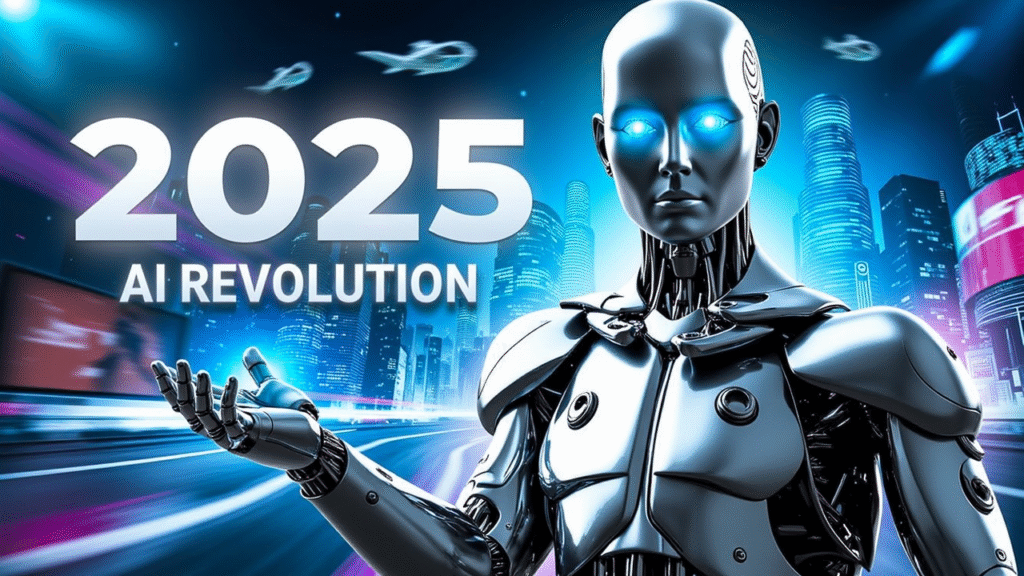
Artificial Intelligence (AI) has traveled a long road — from the imaginative worlds of science
fiction novels and futuristic movies to becoming a living, breathing force that’s reshaping
industries and redefining the very fabric of how we live and work.
Once just a concept confined to research labs and tech enthusiasts, AI today powers our
phones, drives cars, personalizes our shopping experiences, assists doctors in diagnosing
diseases, and even helps teachers create adaptive learning paths for students. In short, AI is
no longer the future — it’s the present.
But as machines learn to “think,” analyze, and even create, one of the most profound
questions of our generation comes to the surface:
Will AI replace human jobs, or will it open doors to new opportunities that never
existed before?
The Transformation Has Already Begun
Across the globe, AI is automating repetitive tasks, increasing productivity, and enabling
data-driven decision-making. In healthcare, AI algorithms can detect diseases from medical
scans faster and more accurately than the human eye. In finance, predictive analytics and
machine learning models are helping institutions detect fraud, forecast market trends, and
personalize customer services.
Meanwhile, in manufacturing, AI-powered robots streamline production lines, ensuring
precision and consistency. In education, intelligent tutoring systems personalize lessons for
each student’s learning pace. And in entertainment — from Netflix recommendations to
AI-generated music — technology is redefining creativity itself.
However, these innovations also bring a new wave of transformation to the global job
market. Roles that once relied on routine and repetition are being automated, while entirely
new job categories — like AI trainers, data ethicists, prompt engineers, and machine
learning operations specialists — are emerging. The challenge lies in adapting our skills
and mindset to this changing landscape.
The Human Touch: Still Irreplaceable
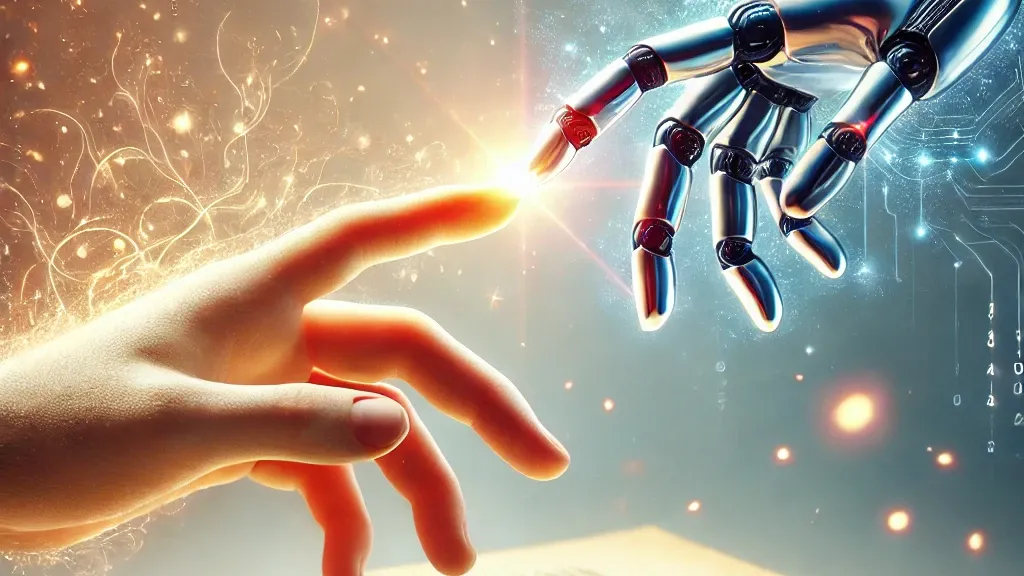
While AI can process data and perform calculations at lightning speed, there are things it
cannot replicate — empathy, ethical judgment, creativity, and emotional intelligence. These
are the distinctly human traits that define leadership, innovation, and meaningful connection.
Rather than seeing AI as a competitor, we can view it as a collaborator — an intelligent
assistant that augments human capabilities rather than replaces them. Imagine marketers
using AI tools to analyze audience behavior more precisely, allowing them to focus on
storytelling and strategy. Or teachers leveraging AI-driven analytics to better understand
student performance and provide personalized attention.
The future of work isn’t about humans versus machines; it’s about humans with machines.
Preparing for the AI-Driven Future
At Pinaki IT Hub, we believe that the key to thriving in this new world lies in continuous
learning, adaptability, and skill transformation. Understanding AI — not just how it works
but how it shapes industries — empowers professionals to stay relevant, resilient, and ready
for the opportunities it creates.
Our goal is to bridge the gap between technology and human potential. Through expert
insights, training programs, and real-world applications, we help learners and professionals
harness AI’s power to drive innovation rather than fear disruption.
Because the truth is, AI won’t replace humans — but humans who know how to use AI will
replace those who don’t.
Artificial Intelligence is not merely a technological revolution; it’s a human revolution. It
challenges us to rethink how we work, what skills we value, and how we can collaborate with
intelligent systems to build a smarter, more inclusive future.
The story of AI is still being written — and each of us has a role in shaping it. The question
isn’t whether AI will take jobs. The real question is:
Are we ready to evolve with it?
The Reality: Automation Is Already Here
Artificial Intelligence is no longer just a futuristic concept — it’s a living, evolving force
transforming every aspect of modern work. Across industries, from healthcare and education
to logistics and creative arts, AI-powered systems are performing tasks once thought to be
exclusively human.
Machines today can analyze X-rays and detect diseases, drive vehicles safely through
traffic, compose music, write code, and even generate lifelike art and storytelling
content. What was once confined to science fiction is now woven into our everyday lives —
quietly automating tasks, optimizing processes, and accelerating innovation.
According to a report by McKinsey & Company, by the year 2030, up to 30% of global
work hours could be automated. Industries like manufacturing, transportation, data
processing, and customer support are at the forefront of this transformation. Automation
is becoming the silent engine powering modern economies — boosting efficiency, reducing
human error, and increasing output at unprecedented scales.
But this doesn’t signal the end of human employment — instead, it marks the beginning of
a massive shift in how we define work. The future of work is not about replacing humans
but redefining the relationship between humans and machines.
The Rise of Intelligent Automation
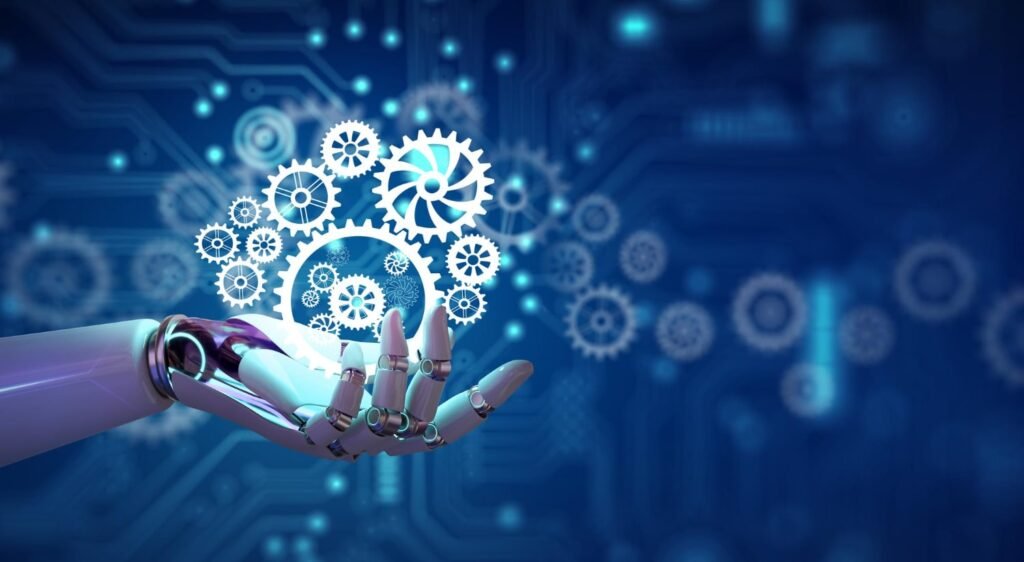
In the past, automation was largely mechanical — machines replaced physical labor in
factories and production lines. Today, automation has evolved into a more intelligent,
cognitive form.
AI systems don’t just execute commands; they learn, adapt, and improve over time. Through
technologies like machine learning, computer vision, and natural language processing,
these systems can analyze enormous amounts of data, identify patterns, and make
predictions with remarkable accuracy.
For example:
● In healthcare, AI-powered diagnostic tools can scan millions of images to identify
tumors or fractures that a human eye might miss.
● In finance, algorithms analyze market data to forecast trends, detect fraud, and
automate trading decisions.
● In retail, AI personalizes recommendations, manages inventory, and predicts
customer preferences.
● In transportation, self-driving systems are reshaping logistics and urban mobility.
These examples reveal a new truth — automation is no longer limited to repetitive or
manual work. It’s moving into cognitive and creative domains, redefining the skill sets that
industries value most.
Redefining Work, Not Replacing It
Despite fears of job loss, automation also brings creation. Every technological revolution in
history — from the industrial age to the digital era — has created new types of work, often
more sophisticated and meaningful than before.
The same holds true for AI. While some routine or rule-based jobs will diminish, entirely new
categories are emerging — AI trainers, data annotators, machine learning operations
engineers, robot maintenance experts, ethics consultants, and automation strategists.
Even traditional roles are evolving. Teachers are now using AI-driven tools to assess
learning patterns. Doctors are leveraging AI for faster diagnostics. Marketers use AI to
decode customer emotions and personalize campaigns.
Rather than viewing AI as a rival, we must see it as a collaborator — a tool that enhances
human capability. Machines can take over repetitive tasks, allowing people to focus on what
they do best: creativity, empathy, problem-solving, and leadership.
The Global Workforce Shift
The impact of automation isn’t uniform. Different regions and industries are adapting at
varying speeds, depending on technological readiness, policy frameworks, and workforce
skills.
Developed economies are already integrating AI deeply into operations — from self-service
banking and robotic manufacturing to AI-assisted education. Meanwhile, developing nations
like India are in a unique position: while automation poses challenges for low-skill labor, it
also creates massive potential for digital transformation, reskilling, and
innovation-driven employment.
As businesses embrace digital ecosystems, new opportunities arise in AI implementation,
cybersecurity, cloud architecture, data analytics, and digital marketing. Governments
and organizations are realizing that investing in upskilling is the key to staying competitive
in the age of automation.
This isn’t just an economic shift — it’s a social one. The definition of employment itself is
evolving, moving from fixed roles to fluid, skill-based engagements. Freelance, remote, and
hybrid models powered by AI are already reshaping professional culture.
Humans + AI — A Partnership, Not a Competition
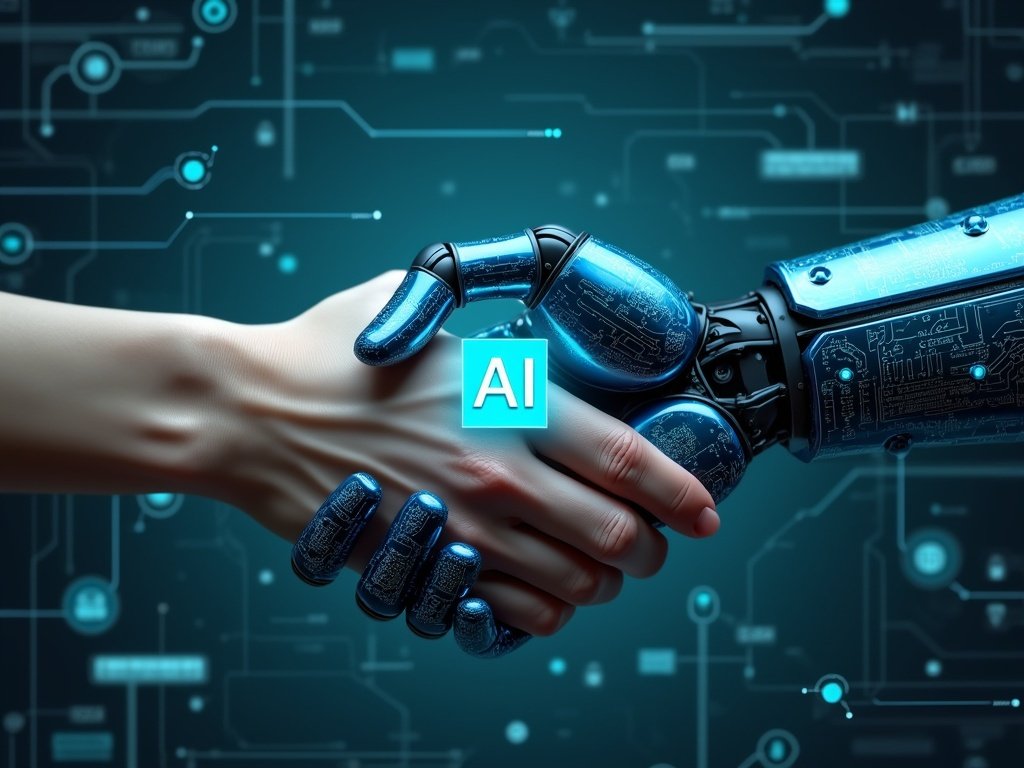
As Artificial Intelligence continues to evolve, one truth becomes increasingly clear: the future
of work will not be about humans versus machines, but about humans with machines.
Automation can process data faster, analyze trends more accurately, and execute tasks with
near-perfect consistency. Yet, it lacks what makes us human — emotion, empathy, ethics,
and imagination. AI can predict human behavior, but it cannot feel it. It can replicate
creativity, but not the intent or emotion behind it.
That’s where the beauty of collaboration emerges. The future belongs to those who learn to
integrate human intelligence — our curiosity, compassion, and intuition — with artificial
intelligence’s unmatched capacity for computation and precision. This fusion isn’t just
efficient; it’s transformational.
Together, humans and AI are not just redefining productivity — they’re reimagining what’s
possible.
Why Collaboration Outperforms Automation
When humans and AI work side by side, each compensates for the other’s limitations.
Machines bring speed, accuracy, and data-driven logic. Humans bring context,
judgment, and purpose.
This partnership allows organizations to move beyond efficiency and into a new era of
intelligent creativity. Consider this:
● AI can scan through millions of documents in seconds, but it takes a human expert to
interpret which insights truly matter.
● AI can optimize marketing campaigns, but only humans can craft messages that
emotionally resonate.
● AI can forecast economic shifts, but it’s human foresight that determines how to
respond strategically.
Automation alone leads to precision. Collaboration leads to progress.
By allowing machines to do what they do best — and freeing humans to do what only they
can — industries are finding a balance that drives both innovation and empathy.
The Architect of Tomorrow
Imagine an architect envisioning a sustainable, carbon-neutral city. With the help of
AI-powered simulation tools, they can instantly analyze climate data, predict energy
efficiency, and visualize environmental impact across decades.
But it’s not AI that dreams of a city where nature and humans coexist harmoniously — that’s
the architect’s vision. AI acts as an assistant, crunching numbers, simulating scenarios, and
helping turn abstract dreams into viable blueprints.
This partnership between human creativity and artificial intelligence transforms imagination
into tangible innovation. Architects of the future won’t just design buildings — they’ll
co-create living ecosystems with AI as their thinking partner.
It’s not about replacing the human mind; it’s about expanding its reach.
Journalism in the Age of Intelligence
The media landscape is another powerful example. Today’s journalists have access to more
information than ever before — from breaking news and social media to complex global data
sets. AI tools can rapidly analyze this data, detect misinformation, and identify emerging
patterns.
But the storytelling — the emotional pulse that connects readers to truth — still comes from
humans.
Imagine a journalist who uses AI to identify trends in global climate data. The algorithm spots
anomalies, maps deforestation patterns, and compiles regional reports. Yet it’s the journalist
who weaves that information into a compelling human narrative — one that inspires
awareness, empathy, and change.
AI delivers information. Humans deliver meaning.
Together, they transform raw data into stories that shape societies.
The Human Resources Revolution
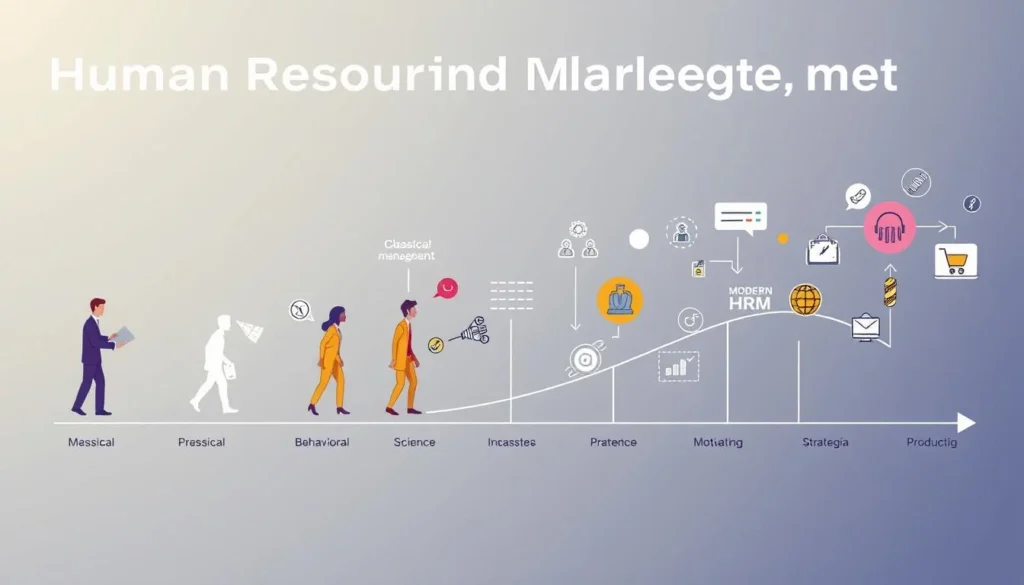
In human resources, the human-AI partnership is redefining how organizations understand
and support their people.
AI-driven analytics can evaluate employee engagement, predict turnover, and assess skill
gaps with remarkable accuracy. Yet, behind every data point lies a story — a person with
emotions, aspirations, and challenges.
An HR professional leveraging AI tools can identify trends that suggest burnout risks or
declining morale. But it’s their empathy and emotional intelligence that translate those
insights into meaningful action — conversations, mentorship programs, and cultural
transformation.
When AI meets empathy, the workplace becomes not just efficient but humane — a space
where technology enhances well-being rather than diminishes it.
This is the future of leadership: emotionally intelligent humans empowered by intelligent
machines.
The Balance of Logic and Intuition
The human mind and artificial intelligence operate on fundamentally different planes — one
thrives on intuition and experience, the other on logic and computation. But when
harmonized, they unlock exponential potential.
For example, in medicine, AI can suggest diagnoses based on data patterns across millions
of patients. Yet, a doctor’s intuition — shaped by empathy, patient history, and moral
reasoning — decides the final course of treatment.
In business, AI can predict consumer trends, but human leaders decide which strategies
align with brand values and ethics.
This delicate balance between data and discernment, logic and compassion, defines the
next chapter of progress. It’s not a matter of choosing one over the other — it’s about
learning how to let both thrive in synergy.
AI may guide us with information, but humans will continue to lead with wisdom.
The Future Is Human-Centered Intelligence
As we step deeper into the AI era, the most successful organizations and individuals will be
those who understand that technology is not the destination — it’s the vehicle.
Artificial Intelligence amplifies our abilities, but it cannot replace the human essence — our
creativity, ethics, empathy, and imagination. The workplaces of tomorrow will not be run by
machines, but with them. Together, we will build smarter cities, healthier communities, more
innovative businesses, and a more compassionate world.
At Pinaki IT Hub, we believe that the true potential of AI lies not in replacing humans, but in
empowering them to become more human than ever before.
The partnership of humans and AI isn’t just about efficiency — it’s about evolution.
And this evolution doesn’t make us less human. It makes us more.
🎓 The Skill Revolution: Learning for the AI Era
rewritten in a rich, descriptive, narrative style with enough depth and detail to naturally
span 7–8 pages when formatted in standard A4 (around 1,500–1,800 words).
The tone blends insightful explanation + storytelling + inspiration, perfect for a
professional blog, whitepaper, or thought leadership content for Pinaki IT Hub.
🎓 The Skill Revolution: Learning for the AI Era
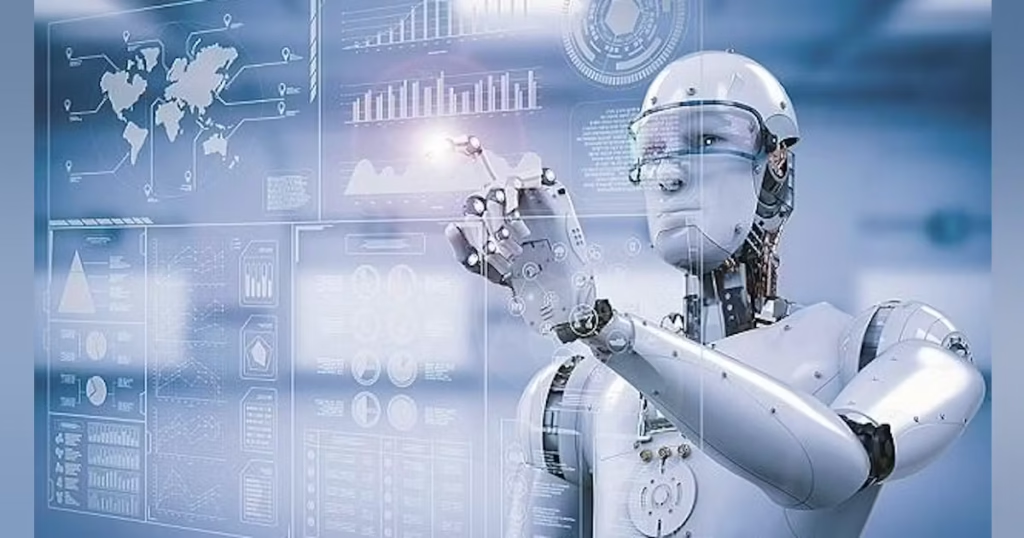
We are living through one of the greatest transformations in human history — a time when
machines can learn, reason, and even create. Artificial Intelligence is reshaping the world
faster than any technological revolution before it. Industries are being rebuilt, new
professions are emerging, and traditional career paths are disappearing almost overnight.
Amidst this global wave of change, one truth is becoming increasingly clear — the future
belongs to the lifelong learner.
To thrive in an automated, AI-driven world, possessing technical knowledge is no longer
enough. What truly defines a successful professional today is the ability to adapt, unlearn,
and relearn continuously. The ability to think critically, question assumptions, and apply
creativity in problem-solving is what separates humans from algorithms. Machines may
process information at lightning speed, but they lack curiosity, imagination, and moral
reasoning — the very traits that make learning a deeply human endeavor.
The era of static education — where a degree could sustain a career for decades — is
fading fast. What we are entering instead is an era of dynamic skill evolution. Every few
years, new technologies emerge that redefine what it means to be “qualified.” A skill learned
five years ago may already be outdated today. The only constant is the need to keep
learning.
From Degrees to Skills — The Great Educational Shift
For much of the 20th century, society measured intelligence and employability through
academic degrees. A university certificate was seen as the ultimate gateway to opportunity
and respectability. But the digital revolution has rewritten those rules.
Today’s employers are no longer impressed by credentials alone — they are looking for
capabilities, not certificates. They want thinkers, innovators, and doers. The question is no
longer, “Where did you study?” but “What can you actually do?”
This paradigm shift has given birth to a new global movement — the skills-based
economy. In this world, the real advantage lies in what you know, how fast you learn, and
how effectively you apply it. Professionals who constantly update their skills stay ahead;
those who rely on old knowledge risk being left behind.
Educational institutions around the world are recognizing this transformation. Traditional
curriculums are giving way to project-based learning, industry-driven programs, and
practical simulations. Students are being encouraged to learn by doing, to question
conventional wisdom, and to collaborate across disciplines.
Fields such as Artificial Intelligence, Data Science, Machine Learning, Robotics,
Cybersecurity, Cloud Computing, and AI Ethics are now at the forefront of modern
education. These are not just specialized subjects — they are the foundation of future
industries.
The Democratization of Learning
Technology has broken down the walls of traditional education. What was once confined to
universities and elite institutions is now accessible to anyone with an internet connection.
This democratization of learning has empowered millions of people worldwide to upgrade
their skills and transform their careers.
Online learning platforms like Coursera, Udemy, edX, Khan Academy, and Google AI
Bootcamps have become digital classrooms for the world. A software engineer in Kolkata
can take a deep learning course from Stanford. A homemaker in Indore can master digital
marketing through Meta’s online academy. A young student in a small town can explore
Python programming, data visualization, or generative AI — all for free or at minimal cost.
This revolution in access has leveled the playing field. No longer does opportunity depend
solely on geography or wealth; it depends on curiosity and commitment. Learning is now
borderless, flexible, and deeply personalized.
We are moving toward an era where individuals will design their own learning journeys —
assembling micro-credentials, certificates, and projects into a portfolio that reflects their true
capabilities. Employers, in turn, are beginning to recognize this diversity of learning
pathways, valuing proof of skill over proof of degree.
The Skills That Matter Most
As automation takes over repetitive and rule-based tasks, the nature of human work is
shifting toward areas where machines struggle — creativity, critical thinking, empathy, and
ethical judgment. The most valuable professionals of the AI era will be those who combine
technical fluency with human intelligence.
In practical terms, that means mastering both hard skills and power skills:
● Digital Literacy: Understanding how to interact, analyze, and create within a
technology-driven environment.
● Data Fluency: The ability to read, interpret, and apply data insights for real-world
decision-making.
● Critical Thinking: Challenging assumptions, identifying biases, and making informed
judgments in complex scenarios.
● Creativity and Design Thinking: Using imagination to design innovative solutions
that machines alone cannot conceive.
● Emotional Intelligence: Recognizing and managing emotions in oneself and others,
fostering collaboration and empathy.
● Adaptability: Embracing change as an opportunity for growth rather than a threat.
● Ethical Reasoning: Understanding the moral implications of technology and
ensuring AI serves humanity responsibly.
These skills are not merely academic concepts — they are the very foundation of leadership,
innovation, and social progress. The professionals who thrive in the AI age will be those who
balance logic with compassion, data with intuition, and ambition with purpose.
Lifelong Learning — The New Professional DNA
In the industrial age, education ended at graduation. In the digital age, learning begins
there.
The half-life of skills — the time it takes for half of what you know to become obsolete — is
now estimated to be around five years or less in most technology-driven fields. This means
that a professional’s knowledge must be continuously renewed, refreshed, and expanded.
The most successful people today treat learning not as a phase of life but as a lifelong
habit. They invest time each day or week to read, explore, experiment, and upskill. They
understand that curiosity is not a luxury — it’s a survival strategy.
This mindset of continuous improvement applies across every profession. A doctor must
learn about AI-assisted diagnostics. A lawyer must understand digital privacy and
cybersecurity. A teacher must adapt to personalized learning tools and AI tutoring systems.
The future workforce will not be defined by titles, but by the ability to evolve continuously.
Pinaki IT Hub — Empowering Future-Ready Learners
At Pinaki IT Hub, we believe that learning is not about keeping pace with technology — it’s
about leading it. Our mission is to empower individuals, students, and professionals to
become future-ready thinkers capable of thriving in the AI era.
Through our learning initiatives, mentorship programs, and real-world projects, we focus on
helping learners bridge the gap between technology and human potential. We emphasize
not just coding or data analytics but also creativity, problem-solving, collaboration, and
ethical awareness.
Our approach is built on three principles:
- Continuous Learning: Education must evolve as fast as technology does.
- Holistic Skill Development: Combining technical knowledge with human-centered
thinking. - Real-World Readiness: Preparing learners to apply their skills in practical,
meaningful ways.
We see AI not as a threat, but as a powerful ally — a tool that can amplify human capability
when guided by ethical and creative minds. By cultivating a culture of lifelong learning, we
aim to nurture professionals who can adapt to the rapid shifts of the digital economy while
staying rooted in empathy and purpose.
The Challenge Ahead — Can Humans Keep Up?
Artificial Intelligence is improving at a breathtaking pace. Machines can now write, paint,
predict, and diagnose. But the real question isn’t whether AI can learn — it’s whether
humans can learn fast enough to keep up.
This is not a race we can afford to lose. The only way to stay ahead is to evolve faster than
technology — to master the skills of adaptability, curiosity, and creative problem-solving that
machines cannot replicate.
The future will not belong to those who know the most, but to those who learn the fastest.
Every breakthrough in AI opens up new frontiers of opportunity — for those prepared to
seize them. The coming decade will reward learners, innovators, and visionaries who are not
afraid to step into the unknown.
Because learning is no longer a one-time investment; it is a lifelong strategy for survival and
success.
A Future Built on Human Learning
The Skill Revolution is more than an educational trend — it’s a cultural transformation. It
challenges us to rethink what learning means, how we define intelligence, and how we
measure success.
The machines are learning — but so can we, faster and better. The difference lies in
purpose. AI learns because it’s programmed to. Humans learn because they are inspired to
— to create, to connect, to change the world.
At Pinaki IT Hub, we believe that the most powerful form of intelligence is not artificial — it’s
adaptive. The ability to grow, evolve, and reimagine oneself is what makes us uniquely
human.
In the age of AI, knowledge may be automated — but wisdom, empathy, and imagination
remain ours to nurture. The future doesn’t belong to the smartest machines; it belongs to the
smartest learners.
And as long as we keep learning, no machine will ever surpass the power of the human
mind that dares to grow.
Looking Ahead: The Future Is Human-Centered
We are living through one of the most profound transformations in human history — a time
when machines can think, learn, and evolve faster than ever before. Artificial Intelligence is
no longer a futuristic idea reserved for science fiction movies; it’s a living, breathing part of
our daily existence. It recommends what we watch, helps us navigate our cities, powers our
digital assistants, and drives the data economy behind nearly every modern business.
And yet, amid all this progress, one question defines our collective future:
Where do humans stand in a world increasingly powered by machines?
The answer is both simple and deeply powerful — the future remains, and must remain,
human-centered.
Because automation is not the enemy. The true enemy is complacency — the refusal to
grow, to adapt, to keep learning. The world will not be divided between humans and
machines, but between those who evolve with technology and those who stand still.
At Pinaki IT Hub, we believe the story of the next decade will not be about machines
replacing people — it will be about people using machines to unlock their highest potential.
The Age of Intelligent Collaboration
For centuries, work has been the foundation of human identity. From the blacksmith’s forge
to the engineer’s lab, our sense of purpose has always been tied to creation,
problem-solving, and contribution. But in the 21st century, the nature of work itself is
changing — not because humans are being replaced, but because we are being redefined.
AI and automation now handle the mechanical, the repetitive, and the analytical — freeing
us to focus on what truly makes us human: imagination, empathy, innovation, and wisdom.
Think of a doctor supported by AI algorithms that detect diseases early, allowing her to focus
on patient care and emotional support. Picture an architect designing smart, sustainable
cities using AI simulation tools that test hundreds of environmental variables in seconds. Or
imagine an artist using generative algorithms to create visuals that combine machine
precision with human soul.
These are not stories from tomorrow — they are happening today.
This new partnership between human creativity and machine intelligence is shaping what
many call the Age of Intelligent Collaboration. It’s not man versus machine, but man with
machine — a relationship that amplifies our abilities instead of diminishing them.
Automation as a Catalyst, Not a Threat
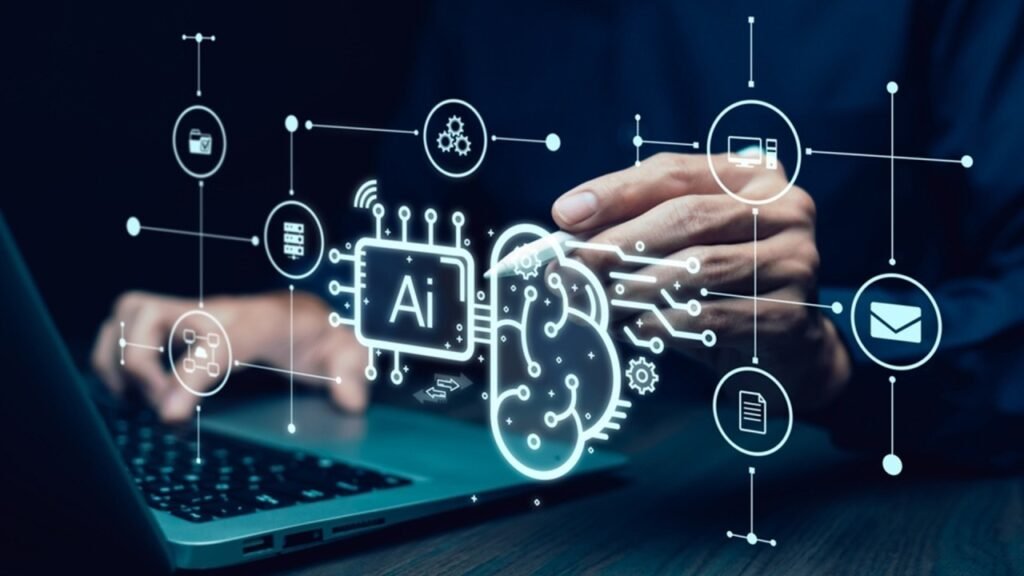
The word “automation” often triggers fear — of lost jobs, redundancy, and dehumanization.
But history tells us that every major technological leap has ultimately created more
opportunities than it destroyed.
When electricity arrived, it eliminated thousands of manual labor jobs but created entire new
industries — from manufacturing to entertainment. When the internet emerged, it disrupted
traditional business models but gave rise to digital marketing, e-commerce, app
development, and remote work.
AI is simply the next chapter in that evolution.
According to McKinsey, by 2030, up to 30% of global work hours could be automated. But
alongside that statistic lies another — the same report predicts that AI will generate
millions of new roles requiring creativity, complex problem-solving, data analysis,
emotional intelligence, and ethical reasoning.
Automation doesn’t end human work; it transforms it. It removes the dull and mechanical so
that we can focus on the meaningful and strategic.
In other words, AI takes away the tasks — not the purpose.
The Rise of the Human Advantage
As machines grow smarter, the qualities that make us uniquely human will become even
more valuable. The next decade will not reward technical knowledge alone, but a blend of
intelligence that is emotional, ethical, and imaginative.
Let’s explore what this truly means:
● Empathy and Emotional Intelligence – Machines may recognize patterns, but they
cannot feel. Empathy — the ability to connect, understand, and care — will be the
most valuable skill in a digital world. Leaders, educators, and entrepreneurs who lead
with empathy will build stronger teams, cultures, and communities.
● Creativity and Imagination – While AI can compose music or generate designs, it
lacks intention and soul. Human creativity brings meaning to art, innovation to
science, and purpose to progress. The most successful creators will be those who
collaborate with AI tools to expand, not replace, their imagination.
● Ethical and Moral Reasoning – As AI makes more decisions on our behalf, humans
will need to provide the compass. Understanding the social, cultural, and moral
implications of technology will be essential in shaping a fair and inclusive future.
● Adaptability and Curiosity – The ability to learn, unlearn, and relearn will define
success. Every professional — from engineers to educators — must adopt a growth
mindset that welcomes change rather than fears it.
This is the essence of the human advantage: the traits that no algorithm can replicate —
empathy, ethics, creativity, curiosity, and courage.
A Human-Centered Future of Work
The workplaces of the future will look radically different — not because humans disappear,
but because they evolve.
Picture an organization where AI handles analytics, scheduling, and repetitive reporting,
allowing humans to focus on innovation, leadership, and collaboration. Picture a school
where teachers use AI-driven insights to understand student learning patterns and tailor
lessons to each child’s potential. Picture a government office that uses automation to handle
paperwork, freeing civil servants to focus on people, not processes.
This is not a dream — it’s the blueprint of the human-centered economy.
In such a world, technology doesn’t strip away jobs — it redefines roles. Employees will
move from executing instructions to designing systems. From managing data to interpreting
insights. From working harder to working smarter.
This transformation is already visible in forward-thinking organizations across the globe.
Hybrid teams — composed of humans and algorithms — are boosting efficiency while
fostering innovation. AI isn’t replacing talent; it’s amplifying it.
The future of work, therefore, is not about man versus machine. It’s about man and machine,
working together to unlock higher forms of purpose and productivity.
Ethical Innovation: The Soul of the AI Revolution
With great power comes great responsibility — and AI is no exception. The true test of
progress is not how advanced our algorithms become, but how responsibly we use them.
A future driven by automation must also be guided by ethics, transparency, and human
values. Questions about data privacy, algorithmic bias, job displacement, and digital
inequality are not just technical — they are moral.
At Pinaki IT Hub, we advocate for a human-first approach to technology — one that
ensures innovation serves people, not the other way around. AI must be designed to
enhance well-being, inclusion, and sustainability.
We believe that ethical AI is not merely a compliance issue — it’s a leadership principle.
Organizations that prioritize integrity, fairness, and inclusivity will build lasting trust in the
digital age.
The future cannot just be intelligent; it must also be humane.
Pinaki IT Hub: Guiding the Human-Centered Transformation
At Pinaki IT Hub, we stand at the intersection of technology and human potential. Our
mission is to help individuals, professionals, and businesses not only understand AI — but
thrive alongside it.
Through training programs, mentorship initiatives, and real-world projects, we enable
learners to build both digital skills and human insight. We focus on creating a new generation
of professionals who can think critically, design responsibly, and innovate with purpose.
Our philosophy is grounded in three core beliefs:
At Pinaki IT Hub, we stand at the intersection of technology and human potential. Our
mission is to help individuals, professionals, and businesses not only understand AI — but
thrive alongside it.
Through training programs, mentorship initiatives, and real-world projects, we enable
learners to build both digital skills and human insight. We focus on creating a new generation
of professionals who can think critically, design responsibly, and innovate with purpose.
Our philosophy is grounded in three core beliefs:
- Technology should empower, not overpower.
Automation must serve humanity by removing barriers and expanding opportunities. - Learning never stops.
The professionals who succeed tomorrow are those who learn continuously today. - Human values define digital progress.
Empathy, ethics, and creativity are the pillars of a sustainable technological future.
We see the AI revolution not as a disruption, but as a reawakening — a chance for humanity
to reimagine what it means to work, learn, and create meaningfully.
Are We Ready to Lead It?
Automation is already here. The world is changing — fast. But change, by itself, is not the
challenge. The challenge lies in how we respond to it.
We can either fear the machine or lead it. We can resist automation or redefine it. We can be
passive participants in the future — or active architects of it.
The choice is ours.
As the line between technology and humanity blurs, the responsibility to shape the future
rests squarely on human shoulders. The question is not whether AI will change the world —
it already has. The question is: will we change fast enough to guide it responsibly?
At Pinaki IT Hub, our answer is a resounding yes. We believe the future belongs to those
who combine intelligence with integrity, logic with compassion, and data with purpose.
The Future Is Human
When history looks back at this era, it won’t remember how powerful our machines became
— it will remember how wisely we used them.
AI may automate tasks, but it can never automate purpose. It can process emotions, but it
cannot feel them. It can simulate creativity, but it cannot dream.
That ability — to dream, to envision, to build meaning from data — is what will keep
humanity at the heart of progress.
The next chapter of our evolution is not about replacing human capability; it’s about
amplifying it.
Not about outsmarting machines, but about outgrowing our limits through them.
Because no matter how advanced technology becomes, it is human imagination that gives it
direction.
It is human compassion that gives it purpose.
It is human courage that turns potential into progress.
The world is changing. Automation is already here.
The question isn’t whether we’re part of this revolution — it’s how we choose to lead it.
At Pinaki IT Hub, we choose to lead with humanity — because the future, no matter how
digital, will always be human-centered.
💡 The Transformation: From Job Loss to Job Evolution
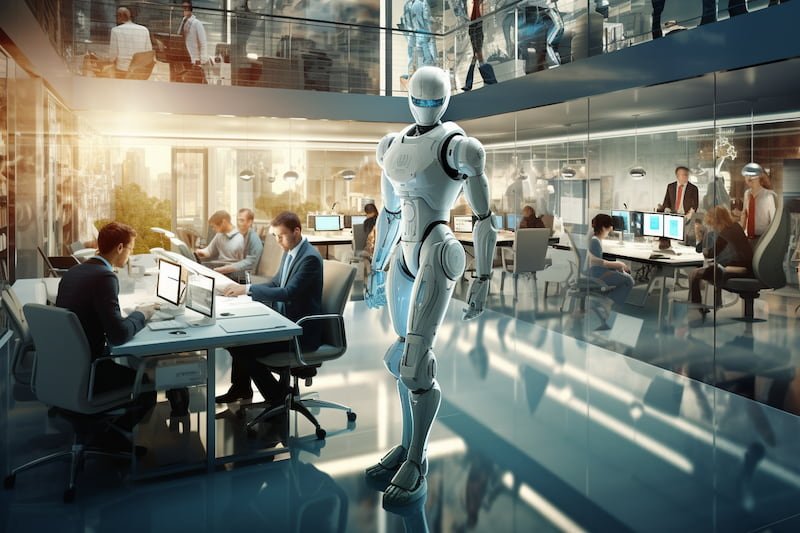
While some routine roles are being automated, AI is also creating entirely new categories of
jobs that didn’t exist before.
For example:
✅ AI Ethics Officers ensuring responsible use of algorithms
✅ Prompt Engineers designing effective AI instructions
✅ Machine Learning Auditors monitoring system bias
✅ Data Labeling and Curation Specialists
✅ AI Trainers teaching models to perform specific tasks
AI is removing repetitive tasks, allowing humans to focus on creativity, strategy, empathy,
and innovation — areas where machines still struggle.
📈 The Opportunity: Upskilling Is the Key
According to the World Economic Forum, 97 million new roles may emerge globally by
2027 due to AI and automation.
These roles will focus on:
● Data analysis and AI model development
● Cloud infrastructure and cybersecurity
● Generative AI content creation
● AI-driven customer service and personalization
At Pinaki IT Hub, we help learners bridge this skill gap through industry-aligned courses in
Data Science, AI, Machine Learning, and Cloud Technologies, empowering them to stay
ahead in the AI economy.
⚖️ The Human Edge: What Machines Can’t Replace
Despite its brilliance, AI lacks emotional intelligence, ethics, creativity, and human intuition —
qualities that define leadership and innovation.
While algorithms can analyze data, only humans can:
● Understand context
● Navigate complex emotions
● Make moral decisions
● Build relationships and trust
These uniquely human capabilities will remain essential in the AI-powered future.
🧭 How to Stay Future-Proof in the Age of AI
By Pinaki IT Hub
The age of Artificial Intelligence is no longer a vision of the future — it’s the reality we live in
today. From smart assistants that manage our schedules to algorithms that diagnose
diseases and predict consumer behavior, AI is rewriting the rules of work, education, and
innovation.
But with this rapid transformation comes an undeniable truth — what got us here won’t get
us there.
The skills that once guaranteed success are no longer enough. Roles that were once stable
are evolving. Industries that relied on human-only expertise are now being reshaped by
intelligent automation. Yet amid this disruption lies a world of opportunity — for those who
are ready to evolve, adapt, and lead.
To stay future-proof in the age of AI, one must become a lifelong learner, a creative thinker,
and a responsible innovator. At Pinaki IT Hub, we see the rise of AI not as a threat but as an
invitation — to grow beyond our limits and build a more empowered, inclusive, and intelligent
future.
So, how can individuals thrive in this new landscape?
Here’s a roadmap for adapting, growing, and leading with confidence in the AI era.
⃣Embrace Continuous Learning — The Power of Lifelong Evolution
The most important skill of the 21st century is not coding, data science, or robotics — it’s the
ability to keep learning.
Technology evolves faster than any formal curriculum. Tools that are cutting-edge today may
be obsolete tomorrow. The only way to stay ahead is to make learning a lifestyle, not a
phase.
Continuous learning means being curious, adaptable, and proactive about your growth. It’s
about stepping out of your comfort zone and embracing the mindset that you are a work in
progress, always.
In the AI era, every professional — regardless of industry — must develop both technical
fluency and human intelligence. Technical skills help you understand how machines think,
while human skills help you understand how people feel.
How to Practice Continuous Learning:
● Stay Updated: Follow AI and tech news, read research papers, and listen to industry
podcasts.
● Microlearning: Spend 15–20 minutes daily on skill-based micro-courses. Platforms
like Coursera, edX, and LinkedIn Learning make it easy to learn on the go.
● Join Communities: Participate in webinars, hackathons, and learning circles where
knowledge sharing happens in real time.
● Reflect and Relearn: Every few months, revisit what you’ve learned and identify
areas to deepen your expertise.
At Pinaki IT Hub, we often remind learners — education doesn’t end with a certificate; it
begins there.
The most successful professionals of the future will not be the ones who know the most —
but the ones who learn the fastest.
⃣Get Certified in AI, Data, and Cloud — Your Passport to Global
Opportunities
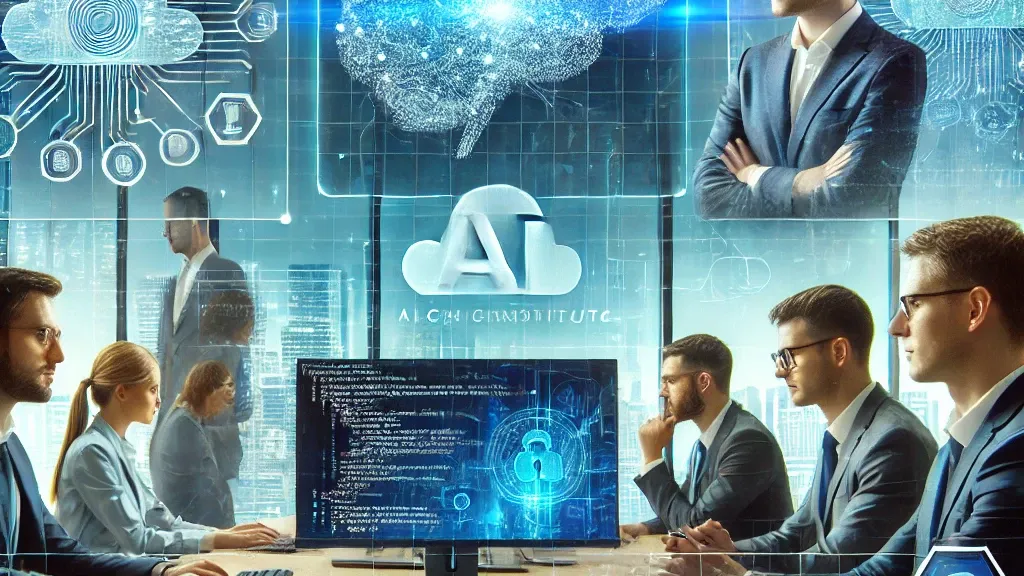
As automation reshapes industries, the demand for professionals who can understand,
design, and manage intelligent systems is skyrocketing. AI and Data Science have become
the new global languages of innovation — and certifications are your passport to this world.
Formal degrees still hold value, but specialized certifications in AI, Machine Learning (ML),
Data Analytics, and Cloud Computing are now recognized as credible, skill-based proof of
expertise. Global companies — from Google and Microsoft to Amazon and IBM — are hiring
based on what you can do, not just what you studied.
Why Certifications Matter:
● They demonstrate your ability to work with real-world tools and technologies.
● They increase your visibility to recruiters and employers across borders.
● They signal commitment — showing that you’re serious about your career evolution.
● They help bridge the gap between traditional education and future-ready skills.
Top Areas to Explore:
● Artificial Intelligence (AI): Learn about neural networks, natural language
processing, and automation systems.
● Machine Learning (ML): Understand predictive modeling, data training, and
algorithmic decision-making.
● Cloud Computing: Get familiar with AWS, Azure, and Google Cloud platforms that
power today’s digital infrastructure.
● Data Analytics & Visualization: Master tools like Power BI, Tableau, and Python
libraries to transform raw data into insights.
● AI Ethics & Governance: Understand the moral, social, and legal responsibilities of
working with intelligent systems.
Pinaki IT Hub actively partners with global learning networks to help professionals achieve
internationally recognized credentials. Through structured learning pathways and
mentorship, we guide learners from foundational understanding to advanced application —
preparing them for roles that didn’t even exist a few years ago.
In the coming years, global certifications will not just be a career advantage — they will be a
career necessity.
In a borderless digital economy, your next opportunity could come from anywhere — if
you’re ready for it.
3️⃣Blend Technology with Creativity — Where Logic Meets Imagination
The AI revolution is often seen as a technical movement — full of code, data, and
algorithms. But at its core, AI thrives on creativity. Machines may be able to calculate,
predict, and generate — but they cannot imagine.
The most powerful innovations of the future will emerge at the intersection of human
creativity and machine intelligence. Professionals who can blend the two — who can use
technology as a creative partner — will lead the next wave of innovation.
Think of how a designer uses AI to generate prototypes in seconds, freeing time to focus on
storytelling. Or how a musician uses AI-driven tools to compose harmonies, but brings
emotion and narrative that only a human can provide. Or how marketers use data-driven
insights to design campaigns that resonate on a human level.
This is not about competing with AI — it’s about collaborating with it.
Ways to Blend Tech and Creativity:
● Experiment with AI Tools: Try using ChatGPT for ideation, Canva’s AI for design, or
Runway for video generation.
● Develop Design Thinking Skills: Learn how to solve problems empathetically,
creatively, and iteratively.
● Bridge Art and Data: Use analytics to inform creative decisions — and creativity to
interpret analytics meaningfully.
● Collaborate Cross-Functionally: Work with people from different disciplines.
Innovation thrives where diversity of thought meets technology.
At Pinaki IT Hub, we encourage learners to view AI as a co-creator. Whether you’re in
business, education, healthcare, or entertainment, the ability to think both technically and
creatively will set you apart.
Because in the coming decade, creativity won’t be a luxury — it will be a competitive
advantage.
⃣Focus on Human-Centric Roles — The Irreplaceable Core
● Design Thinking: Professionals who can design solutions that prioritize user
experience and empathy.
● Ethical AI & Policy: Specialists who ensure technology is used responsibly and
transparently.
● Leadership & Change Management: Leaders who can guide teams through
transformation with vision and empathy.
● Education & Coaching: Mentors and educators who can teach humans how to
thrive alongside machines.
● Psychology & Behavioral Science: Experts who understand how humans interact
with intelligent systems and shape digital well-being.
These fields will define the next era of innovation — because as technology grows more
complex, so too does the need for human understanding.
At Pinaki IT Hub, we integrate human-centric thinking into every aspect of our learning
programs. Whether it’s ethical coding workshops, leadership seminars, or design-thinking
bootcamps, our goal is to ensure technology serves humanity — not the other way around.
In the race for efficiency, empathy must never be left behind.
⃣Build a Growth Ecosystem — Learn, Collaborate, and Evolve Together
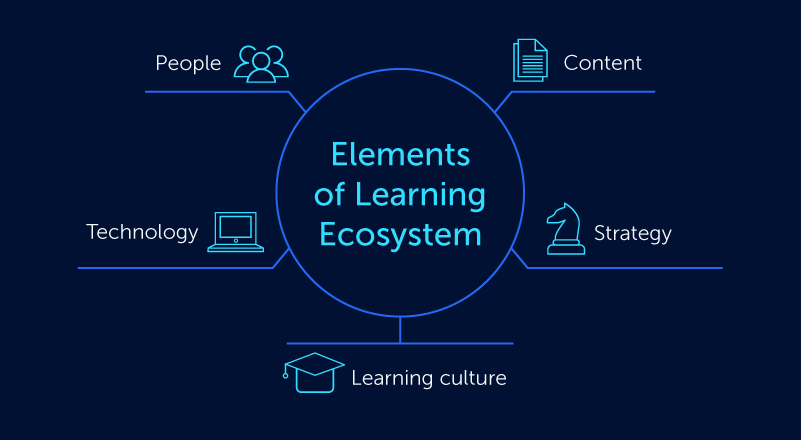
No one thrives alone in the AI era. The future belongs to ecosystems — networks of
learners, innovators, mentors, and creators who grow together.
Building your own ecosystem means surrounding yourself with communities that inspire and
challenge you. It’s about networking not just for opportunities, but for evolution.
How to Build a Growth Ecosystem:
● Join AI and Tech Communities: Be part of open-source projects, forums, and
hackathons.
● Engage in Mentorship: Find mentors who can guide your learning journey — and
mentor others in return.
● Collaborate Across Disciplines: Innovation happens when coders talk to
designers, educators talk to engineers, and data scientists talk to psychologists.
● Stay Connected Globally: Attend international conferences, webinars, and summits
to understand how the world is evolving.
Pinaki IT Hub actively cultivates such ecosystems — connecting learners, educators, and
industry experts through collaboration. Because the future isn’t built by individuals — it’s built
by communities that learn faster than the world changes.
⃣Redefine Success — From Survival to Significance
In an AI-driven world, success will no longer be measured by job titles or salaries alone. It
will be defined by impact — how your skills, innovations, and decisions improve lives.
To stay truly future-proof, one must shift focus from survival to significance. That means
using technology not just to gain, but to give.
Professionals who bring purpose to their work will lead the next generation of industries. AI
will automate functions, but humans will still provide direction, meaning, and values.
At Pinaki IT Hub, we encourage learners to build careers of purpose — not just careers of
performance. Because in the long run, machines may win on efficiency, but humans will
always win on empathy.
The Road Ahead: Adapt. Grow. Lead.
The AI revolution is not waiting for anyone — but it’s welcoming everyone who’s ready to
evolve.
To stay future-proof, you don’t need to be the smartest person in the room; you just need to
be the most adaptable. You don’t need to master every new technology; you need to master
the art of learning how to learn.
Automation will keep changing the world — but humans will always define its direction.
So ask yourself today —
Are you merely preparing for the future, or are you preparing to shape it?
At Pinaki IT Hub, we’re building that future — one learner, one innovator, one dreamer at a
time.
Because no matter how intelligent machines become, the future will always belong to those
who keep learning, keep growing, and keep leading with humanity.
The Future of Crypto: Currency Revolution or
Bubble?

Introduction: The Digital Currency Dilemma
In just over a decade, cryptocurrency has gone from being a geek experiment to one of the
most discussed financial phenomena of our time.
It began as a digital dream — a decentralized currency system free from banks,
governments, and borders. Bitcoin, the first cryptocurrency, was born in 2009 as a rebellion
against traditional finance after the global financial crisis.
Today, that dream stands at a crossroads.
On one side, crypto advocates call it a revolution — the future of money that empowers
individuals and disrupts centralized power structures.
On the other, skeptics see it as a bubble — a speculative craze fueled by hype,
misinformation, and volatility.
So, is crypto truly the currency of the future, or just another passing financial trend?
Let’s dive deep into how cryptocurrency began, evolved, and where it might lead us next.
From Bitcoin to Blockchain – The Birth of a Revolution
When Satoshi Nakamoto (the mysterious creator of Bitcoin) published the Bitcoin
whitepaper in 2008, the idea was radical — a peer-to-peer electronic cash system that
eliminated the need for intermediaries.
At its heart was blockchain technology, a transparent, tamper-proof digital ledger that
recorded every transaction. Unlike traditional banks, blockchain didn’t rely on central
authority — instead, it was distributed across a network of computers.
The Core Principles Behind the Revolution:
● Decentralization: No single entity controls the system.
● Transparency: Every transaction is verifiable on the blockchain.
● Security: Data can’t easily be altered or forged.
● Limited Supply: Cryptocurrencies like Bitcoin are capped, protecting them from
inflation.
These principles made crypto an ideological movement as much as a technological one —
representing financial freedom, privacy, and independence from institutions.
However, as Bitcoin gained fame, it also attracted attention from investors, speculators, and
opportunists — slowly transforming from a “currency of the people” to a “digital asset class.”
The Rise, Fall, and Rise Again of the Crypto Market

The crypto journey has been anything but stable.
From the meteoric rise of Bitcoin to nearly $69,000 in 2021 to its dramatic crashes in
subsequent years, the market’s volatility is legendary.
But behind every surge and slump lies a story:
● In 2017, the first major crypto boom brought millions of new investors — many driven
by fear of missing out (FOMO).
● 2018 saw a brutal crash, wiping out billions in market value.
● Yet, by 2020, fueled by institutional adoption and blockchain innovation, crypto roared
back to life.
What Drives These Ups and Downs?
● Investor Speculation: Price swings often follow hype rather than intrinsic value.
● Regulatory News: Government actions or bans trigger instant reactions.
● Technological Innovations: Updates like Ethereum’s “Merge” or Bitcoin halving
events change perceptions.
● Market Manipulation: “Whales” (large holders) can sway prices drastically.
Still, despite constant turbulence, crypto’s market capitalization now stands in the trillions,
proving one thing — it’s not fading away anytime soon.
Revolutionizing Money — Crypto’s Real-World Potential
While many still view crypto as digital gambling, its underlying technology has real and
transformative potential.
🔹 1. Financial Inclusion
In many developing nations, millions remain unbanked — lacking access to traditional
financial systems. Cryptocurrencies allow people to send, receive, and store money with
nothing but a smartphone, breaking barriers of geography and bureaucracy.
🔹 2. Borderless Transactions
Crypto allows instant international payments with minimal fees, unlike traditional
remittance services that take days and charge high percentages.
🔹 3. Protection Against Inflation
Countries suffering from hyperinflation (like Venezuela or Zimbabwe) see crypto as a store
of value — a hedge against collapsing local currencies.
🔹 4. Smart Contracts
Ethereum introduced programmable money through smart contracts — self-executing
digital agreements that automatically enforce terms without intermediaries.
This innovation paved the way for:
● DeFi (Decentralized Finance): Banking without banks.
● NFTs (Non-Fungible Tokens): Digital ownership of art, music, and media.
● DAOs (Decentralized Autonomous Organizations): Internet-native communities
that make collective decisions using blockchain.
In essence, crypto is evolving from just currency to an entire digital economy.
The Bubble Argument — Hype, Speculation, and Scams
But every revolution attracts its share of chaos.
Critics argue that crypto’s astronomical rise has little to do with real-world value and
everything to do with speculative mania — the kind seen in historical bubbles like the
Dot-Com Boom or even the Tulip Mania of the 1600s.
The Case Against Crypto:
● Extreme Volatility: Prices can rise or fall 30% in a single day.
● Lack of Regulation: Without oversight, scams and rug-pulls are rampant.
● Environmental Concerns: Mining cryptocurrencies consumes massive energy.
● Limited Usability: Most retailers and countries still don’t accept crypto as payment.
● Market Manipulation: A handful of large players hold most of the supply.
The result? Many retail investors lose money chasing short-term gains.
Indeed, the 2022 collapse of major exchanges like FTX and the crash of Luna/TerraUSD
exposed how fragile the ecosystem can be.
Billions vanished overnight — reminding the world that crypto, while promising, is still a
high-risk frontier.
The Middle Ground — Evolution, Not Elimination
Between the extremes of “crypto revolution” and “crypto bubble” lies the truth:
Cryptocurrency is neither a scam nor a savior — it’s a technology still in evolution.
The Transition We’re Witnessing:
● From speculation to utility.
● From private projects to government-backed systems.
● From chaos to compliance.
Even major global institutions that once rejected crypto are now exploring blockchain
integration.
● Banks like J.P. Morgan use blockchain for internal settlements.
● Governments are experimenting with CBDCs (Central Bank Digital Currencies) —
digital versions of national currencies.
● Tech giants are integrating Web3 and blockchain wallets into their ecosystems.
So, rather than destroying the financial world, crypto may be forcing it to adapt.
The Future of Crypto — Five Possible Scenarios
Predicting the future of cryptocurrency is tricky, but analysts and economists generally
consider these five major possibilities:
1️⃣Global Adoption
Cryptocurrency becomes mainstream — used for global trade, daily purchases, and smart
contracts. Governments regulate rather than resist, and blockchain underpins financial
systems worldwide.
2️⃣Coexistence with Traditional Finance
Crypto and fiat money operate side by side. People use cryptocurrencies for digital
transactions and investments while still relying on national currencies for stability.
3️⃣Centralized Digital Currencies
Governments launch CBDCs, combining blockchain’s efficiency with the control of fiat
systems. This could reduce demand for decentralized coins like Bitcoin.
4️⃣Market Consolidation
Thousands of cryptos vanish, leaving only a few strong survivors like Bitcoin, Ethereum, or
regulated stablecoins.
⃣Collapse and Reinvention
In the worst-case scenario, global regulations, energy restrictions, and mass disillusionment
trigger a crash — but blockchain technology survives and finds new purpose beyond finance
(like data management, logistics, or governance).
Whichever path unfolds, one truth remains: the technology isn’t disappearing — it’s
simply transforming.
Opportunities Ahead — Careers, Innovation & Skill
Growth
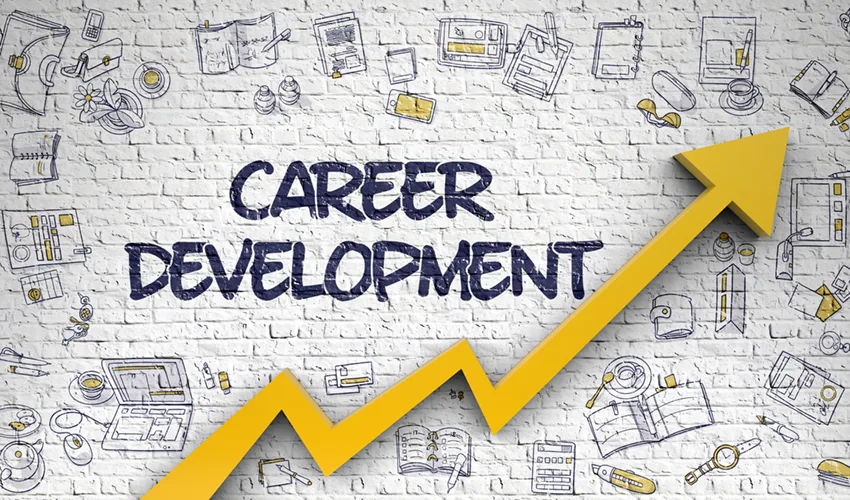
Crypto’s impact isn’t limited to finance. It’s creating new industries and careers that didn’t
exist a decade ago.
Emerging Career Fields:
● Blockchain Developers & Engineers
● Crypto Analysts & Traders
● Smart Contract Auditors
● Cybersecurity Experts for Web3
● AI–Blockchain Integration Specialists
● DeFi Strategists
● Metaverse Architects
At institutions like Pinaki IT Hub, we see crypto not just as a financial tool, but as a gateway
to technological evolution.
Our learning programs around blockchain, fintech, and AI prepare learners for tomorrow’s
digital ecosystem — where code, currency, and creativity merge.
Why Learning About Crypto Matters
● It teaches financial literacy in the digital age.
● It opens doors to global remote jobs.
● It helps professionals understand the next internet phase — Web3.
● It prepares innovators to build decentralized applications (DApps) that could define
the future.
The Final Verdict — Revolution or Bubble?
So, what’s the answer — revolution or bubble?
In truth, it’s both — and that’s what makes it fascinating.
Like every major innovation, cryptocurrency has gone through its hype cycle:
● Innovation trigger (Bitcoin’s invention)
● Peak of inflated expectations (massive media attention)
● Trough of disillusionment (market crashes)
● Slope of enlightenment (real-world adoption begins)
Today, we stand somewhere between disillusionment and enlightenment.
The noise is settling, scams are being filtered out, and utility is starting to outshine hype.
The future of crypto won’t be about overnight riches — it will be about long-term
transformation:
● How we store value
● How we exchange trust
● How we build systems that belong to everyone, not just a few
Beyond Coins and Charts — The Crypto Mindset
Cryptocurrency isn’t just a new way to pay — it’s a new way to think about money, value,
and freedom.
Whether you view it as a revolution or a bubble, crypto has already changed how we
perceive ownership, innovation, and decentralization.
It’s teaching a new generation to question authority, to demand transparency, and to imagine
a financial world built on trustless systems rather than blind faith.
So, will crypto replace traditional currency?
Maybe not entirely.
But will it redefine finance, technology, and the internet as we know it?
Absolutely.
As we move forward, the smartest approach isn’t fear or blind faith — it’s education.
Because the more we understand, the more we can shape this revolution responsibly.
At Pinaki IT Hub, we believe in empowering learners with that understanding — turning
curiosity into competence, and innovation into opportunity.
Replace or Reinvent?
The Human-AI Revolution and the Future of Work
There’s a question echoing through every industry, every boardroom, every classroom today:
Will Artificial Intelligence replace us — or reinvent us?
For decades, AI was the stuff of science fiction — a dream of self-learning machines that
could think, decide, and create. But in just a few short years, that dream has become reality.
AI now powers the systems that diagnose diseases, recommend music, trade stocks, design
buildings, and even write stories.
It’s no longer a matter of if AI will change our world — it already has. The real question now
is: how will we change with it?
🌍 The Great Redefinition: Beyond Replacement
AI is not a replacement for human intelligence — it’s a redefinition of it.
When calculators first emerged, people feared mathematics would lose its value. When
computers entered offices, many predicted the end of clerical jobs. Yet, with every wave of
automation, humanity didn’t fade — it evolved.
Each technological revolution has elevated us to higher levels of creativity, strategy, and
innovation. AI is simply the next chapter in that story — and perhaps the most transformative
one yet.
Yes, machines can now perform tasks that once demanded human effort: they can process
data faster, predict trends more accurately, and execute repetitive tasks tirelessly. But here’s
the truth — they still cannot dream, empathize, or make sense of meaning.
AI lacks the emotional intelligence to comfort a patient, the empathy to lead a team through
crisis, the creativity to tell a moving story, or the moral compass to make ethical decisions.
Those qualities remain uniquely human — and they are more valuable than ever before.
So rather than fearing replacement, we must focus on reinvention.
Because the future of work will not be human versus machine — it will be human with
machine.
💡 The Hybrid Future: Where Humans and AI Collaborate
The most powerful force of the 21st century is not artificial intelligence alone — it’s
augmented intelligence, the seamless partnership between human minds and machine
learning.
Imagine this:
● A doctor using AI to detect tumors invisible to the human eye — but relying on
human judgment to decide the best treatment plan.
● An architect designing sustainable cities using AI-driven simulations that calculate
wind flow, sunlight, and energy efficiency.
● A teacher using AI tools to personalize education for each student’s unique learning
pace, freeing time to focus on creativity and mentorship.
● An entrepreneur leveraging predictive analytics to anticipate market needs and
design innovative solutions before anyone else.
In each scenario, AI acts as an amplifier — enhancing human potential, not erasing it.
This synergy marks the next frontier of the digital revolution — a world where humans and
machines co-create, complementing each other’s strengths.
🧠 From Fear to Flourish: Changing the Narrative
Whenever a new technology rises, fear follows. It’s natural — change is unsettling. But
history teaches us that adaptation always leads to advancement.
During the Industrial Revolution, machines replaced manual labor but also created entirely
new sectors — manufacturing, logistics, engineering, and global trade. Similarly, the
Information Revolution replaced typists and switchboard operators but gave birth to software
engineering, web design, and digital marketing.
Now, the AI Revolution is reshaping the workforce once again. But instead of destruction, it
promises transformation.
A report by the World Economic Forum estimates that while AI may displace 85 million jobs
globally by 2025, it will also create 97 million new roles — in fields such as data science,
robotics, cybersecurity, and AI ethics.
The question, then, is not whether jobs will vanish — but whether we are ready to evolve fast
enough to seize the new ones.
At Pinaki IT Hub, we call this the Reinvention Mindset — a commitment to lifelong learning,
adaptability, and collaboration between human and artificial intelligence.
🔍 Reinventing the Human Skillset
If AI can now analyze data, write reports, and even compose music, what does that mean for
human workers?
It means we must shift focus from what can be automated — to what can be elevated.
The workforce of the future will be built on a new combination of capabilities:
● Analytical Thinking — understanding and interpreting AI-driven insights.
● Digital Literacy — knowing how to use intelligent tools effectively.
● Creativity & Innovation — solving complex problems with imagination.
● Ethical Intelligence — ensuring technology serves humanity responsibly.
● Emotional Intelligence — connecting, motivating, and empathizing with others.
● Adaptability — continuously unlearning and relearning as technology evolves.
In short, the future professional is not just a technician — but a tech-humanist, someone
who understands both algorithms and empathy.
AI can do many things — but it can’t replicate why we do them. Our values, our creativity,
and our ability to make meaning out of chaos will always be irreplaceable.
🚀 Reinventing Careers: The Rise of the AI Professional
AI is now embedded across industries — from finance and healthcare to education, logistics,
agriculture, and entertainment. Every company, whether a startup or a global enterprise,
needs professionals who can understand, implement, and ethically manage AI systems.
This has given rise to an entirely new category of careers — AI-powered professions —
where human creativity meets machine capability.
Some of the fastest-growing roles include:
● AI Engineer / ML Specialist — designing algorithms that allow machines to learn.
● Data Scientist — transforming massive datasets into actionable insights.
● Cloud & DevOps Engineer — ensuring AI systems run seamlessly on global
infrastructure.
● AI Product Manager — bridging the gap between business strategy and technical
execution.
● Ethical AI Consultant — ensuring fairness, transparency, and accountability in AI
deployment.
● AI UX Designer — creating human-friendly interfaces for intelligent applications.
At Pinaki IT Hub, we’ve spent over 12 years helping learners across 22+ countries prepare
for these very roles. Our globally recognized programs in Artificial Intelligence, Data
Science, Machine Learning, Cloud Technologies, and Generative AI are designed not
only to build technical mastery but also to cultivate creative and ethical thinking.
We don’t just teach algorithms — we teach adaptability. Because in an AI-driven world, the
ability to keep evolving is your greatest skill.
🔬 Reinventing Education: From Learning to Evolving

Traditional education was built for a world that changed slowly. But AI has rewritten the rules
of speed, scale, and skill.
Knowledge today has a half-life — it decays unless renewed. A coding language, a data
model, or a tool you learned two years ago might already be outdated. What matters most is
not what you know, but how fast you can learn something new.
That’s why modern education is shifting from degrees to dynamic learning ecosystems.
At Pinaki IT Hub, our philosophy of education is rooted in the future:
● Learn by Doing: Every course emphasizes real-world projects, simulations, and
case studies.
● Mentorship-Driven: Industry experts guide learners through applied
problem-solving.
● Global Exposure: Our programs attract learners from around the world, creating
diverse, collaborative classrooms.
● Future-Ready Skills: From generative AI to ethical innovation, we teach what
industries will need next — not just what they needed yesterday.
Our goal is not to produce job seekers — but job creators and innovators who redefine
what’s possible.
🌐 Reinventing the Global Workforce
The world is now one connected digital ecosystem. Remote work, virtual collaboration, and
cloud platforms have dissolved geographical barriers. A developer in Mumbai can work for a
company in Berlin; a data analyst in Lagos can collaborate with a research lab in Tokyo.
AI accelerates this borderless economy, creating global demand for skilled professionals
who can think internationally and act locally.
But global opportunity comes with global competition. The only way to stand out is to stay
future-ready — armed with relevant skills, a growth mindset, and an ability to collaborate
with both humans and machines.
This is why upskilling is no longer optional — it’s the foundation of career security.
At Pinaki IT Hub, we empower professionals to bridge this global gap. Our programs in AI,
Data Science, Cloud Computing, and DevOps are tailored to international standards,
ensuring that every learner is equipped for the world stage.
🧭 Reinventing the Self — From Employee to Explorer
The AI revolution isn’t just about changing jobs — it’s about changing how we see ourselves.
In the industrial age, success was about stability. In the AI age, it’s about evolution.
You are no longer defined by a single title, company, or role. You are a lifelong learner, a
creator, an explorer of possibilities. The tools of tomorrow — from AI assistants to generative
models — are extensions of your creativity.
The professionals who will lead the AI century are those who dare to reinvent themselves
constantly — to see change not as disruption but as direction.
Every new skill you acquire, every technology you explore, every challenge you embrace —
adds another layer to your human intelligence. And that’s something no machine can
replicate.
🌠 The Human Advantage: Purpose, Empathy, and Imagination
Even in the most automated future, there will always be one competitive edge that belongs
exclusively to humanity — purpose.
AI can process data, but it can’t feel meaning.
It can imitate art, but it can’t feel emotion.
It can suggest decisions, but it can’t carry responsibility.
That’s why the leaders of the AI era will be defined not just by technical skills, but by values.
The future needs ethical innovators, compassionate leaders, and visionary thinkers who can
align technology with human progress.
At Pinaki IT Hub, we believe that the future is human-centered.
Our mission is to prepare individuals who can guide AI with wisdom, use data with empathy,
and lead innovation with conscience.
🚀 Build Your AI Career with Pinaki IT Hub
If you’re ready to build a career that thrives in the AI era — this is your moment.
At Pinaki IT Hub, we offer globally recognized learning pathways designed to empower
learners with the most in-demand technology skills of our time:
✅ Artificial Intelligence & Machine Learning — Master algorithms, automation, and
neural networks.
✅ Data Science & Analytics — Turn information into actionable insight.
✅ Cloud & DevOps Technologies — Build scalable, secure, and efficient systems.
✅ Generative AI Applications — Create with the most advanced AI tools reshaping
creativity and business.
With 12+ years of excellence, learners from 22+ countries, and industry-aligned
mentorship, we don’t just prepare you to adapt — we prepare you to lead.
Because the future doesn’t belong to those who wait for change — it belongs to those who
create it.
👉 Visit www.pinakiithub.com to schedule your free counseling session today.
Your AI future starts now — and the best time to reinvent yourself is today.
